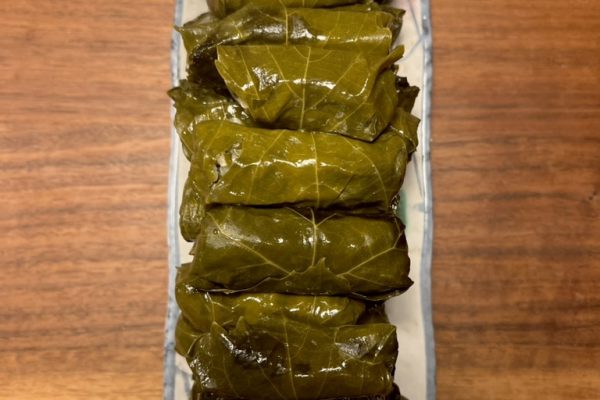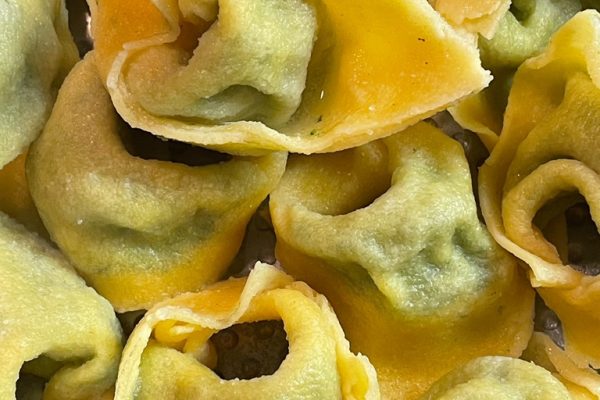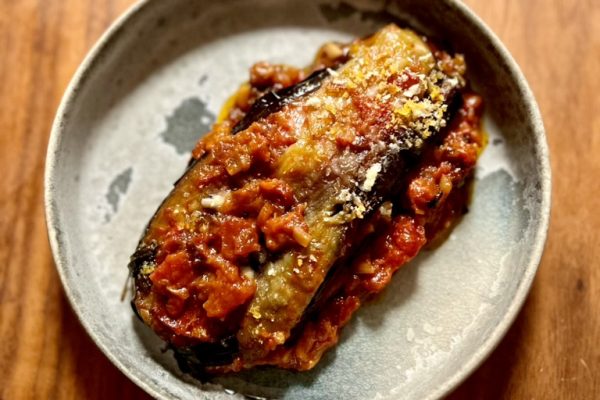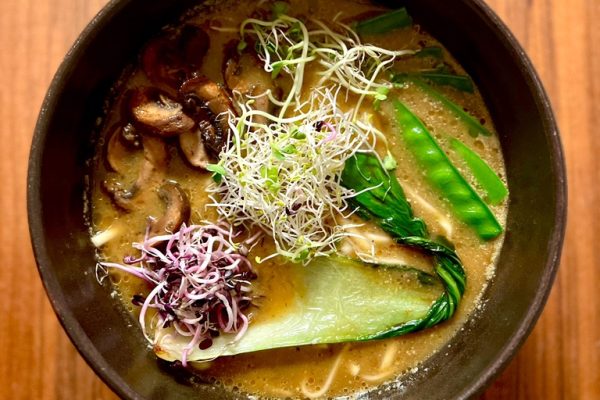The city of Königsberg was located in a country called Prussia. Today it is called Kaliningrad. Fitting to the bizarre and also gruesome history from which today’s Germany emerged, “Königsberger Klopse” are nevertheless one of the most famous dishes of German cuisine (as far as Germany is not confused with Bavaria, anyway). Although, strictly speaking, it has hardly anything to do with today’s nation, but this is not a blog for history and certainly not for politics, even though we are always very interested in both.
Recipes for it have been around for more than 150 years and, amazingly, they have hardly changed in all this very dynamic time. In ours, instead of plain salted water, broth is used, and that’s almost all the difference.
How to cook a good broth at home, we have described, for example, here and here. For those who want to advance their home food, also in terms of sustainability, we highly recommend to do so.
For perfect time management, start with the base for the sauce. Formerly simply salted water to taste, we use half vegetable and half beef broth.
An onion is “gespickt” by making two cuts and inserting a bay leaf into each cut. Also, cloves are stuck into the onion stem first, so you can easily remove the spices later.

The broth is heated to a gentle boil and the onion is put in along with the spices. To this is added either allspice pods or – as we are doing for some time now – a little ground allspice instead. This is left to simmer for at least 20 minutes. More time won’t hurt. Keep tasting so you develop the perfect flavor for your taste. Cloves, bay leaf and allspice make for intense and bitter flavors, and that’s how it is supposed to be.

This time is needed for further preparation. For the “Klopse” in the former times they used the minced meat that one could get. Nowadays they are mostly prepared with veal. For the consistency of the meatballs you should add soaked bread, as we have explained here.
Historically an older roll or bun was used, which was soaked in water or milk. We use milk and instead of the roll toast, because it provides a more homogeneous mixture.
In addition, you need salt and black pepper, finely chopped parsley, egg yolk, grated peel from a well-washed, untreated lemon and – absolutely essential – finely chopped capers and anchovy fillets.
Tip for the salt: 10 – 15 grams, depending on taste, is the right amount for seasoning 1 kg of minced meat (of which we use here only 500 g). In this case, salty capers and anchovies are added, so a maximum of 10 g is a good orientation. The volume of pepper, also for orientation, should be about a third of the salt. Everything else is a matter of taste.
These ingredients are mixed well by hand and then formed into balls about 4 – 5 cm in diameter. Not too big, otherwise cooking to the core will be difficult.

And the cooking is what we are about now. These meatballs are not fried, but poached. Just very carefully put the formed balls in the broth and let them gently simmer for not less than 20 minutes. Bubbles should rise just barely, then the temperature is right. Heavy boiling, on the other hand, would be wrong.

The onion is removed when the taste is right for you. This may be the case even before adding the meat. If not, for hygienic reasons, do not taste the broth again with the meat until it has been cooking for at least 10 minutes.
After 20 minutes at the latest, remove the “Klopse” from the broth and set aside. We pour the broth now through a very fine sieve to remove protein from the meat, which should appear in it as foam or flakes of gray color.
Now for the sauce, and it’s a serious one, too:
You need butter and flour for a roux. Also cream, lemon juice, more egg yolk and definitely more capers.
How to separate egg yolk from egg white? Explained here.

Tip for the lemon juice: You have already grated zest from a lemon, it will now spoil quickly. Lay it lengthwise and cut off pieces lengthwise without cutting through the center of the lemon, this way the seeds remain and you can squeeze the juice of the lemon pieces without seeds getting into your sauce.
Making a roux is simple. Butter is melted over medium-high heat and when it is completely liquid, the flour is added.

Then this mixture is mixed well with a whisk and cooked on low heat for about 4 – 5 minutes, so that the flour loses its raw flavour.

Now add the broth, stirring constantly with a whisk. The cream follows right after. With the quantities given at the end of the recipe, this should give a perfect result after a good 5 minutes, if no lid is put on – evaporation of the broth is included. If you ever find the sauce too thin: dissolve a teaspoon of starch in 2 tablespoons of cold water and then add the mixture – after a short boil, the sauce will immediately thicken more without affecting the flavour.

Then it is seasoned, in our case with white pepper, salt if necessary (unlikely), lemon juice and – very fitting – Worcestershire sauce. It, too, is based on anchovies and bitters and therefore harmonizes perfectly with this dish.

When everything is seasoned to your satisfaction, add egg yolk. The sauce must then no longer boil, this process is called alloying and we have already described it here.
Now the capers are added and the meatballs are gently warmed in this sauce until serving.

The classic garnish is potatoes cooked in salted water, preferably young, with a little butter and parsley. For our taste, however, rice also fits very well.

Enjoy.
And may the taste be with you.
Ingredients (for 4 people):
For the broth:
1.5 l broth ( half beef broth and half vegetable broth – alternative: salted water to taste)
1 large onion
2 bay leaves
5 – 6 cloves
5 allspice pods or ½ tsp allspice powder
For the “Klopse”:
500 g minced meat (veal is in vogue today, it certainly wasn’t in the past)
2 tsp capers
3 anchovy fillets (if you don’t like it – less)
2 slices of toast (or half a roll), soaked in 5 tablespoons of milk
2 egg yolks
2 tsp mustard
Parsley
Grated zest of 1/3 lemon
Salt and pepper
For the sauce:
35 g butter
35 g flour
180 ml cream
3 tsp capers
2 egg yolks
Lemon juice to taste




